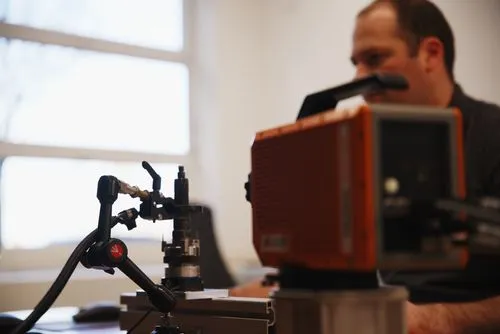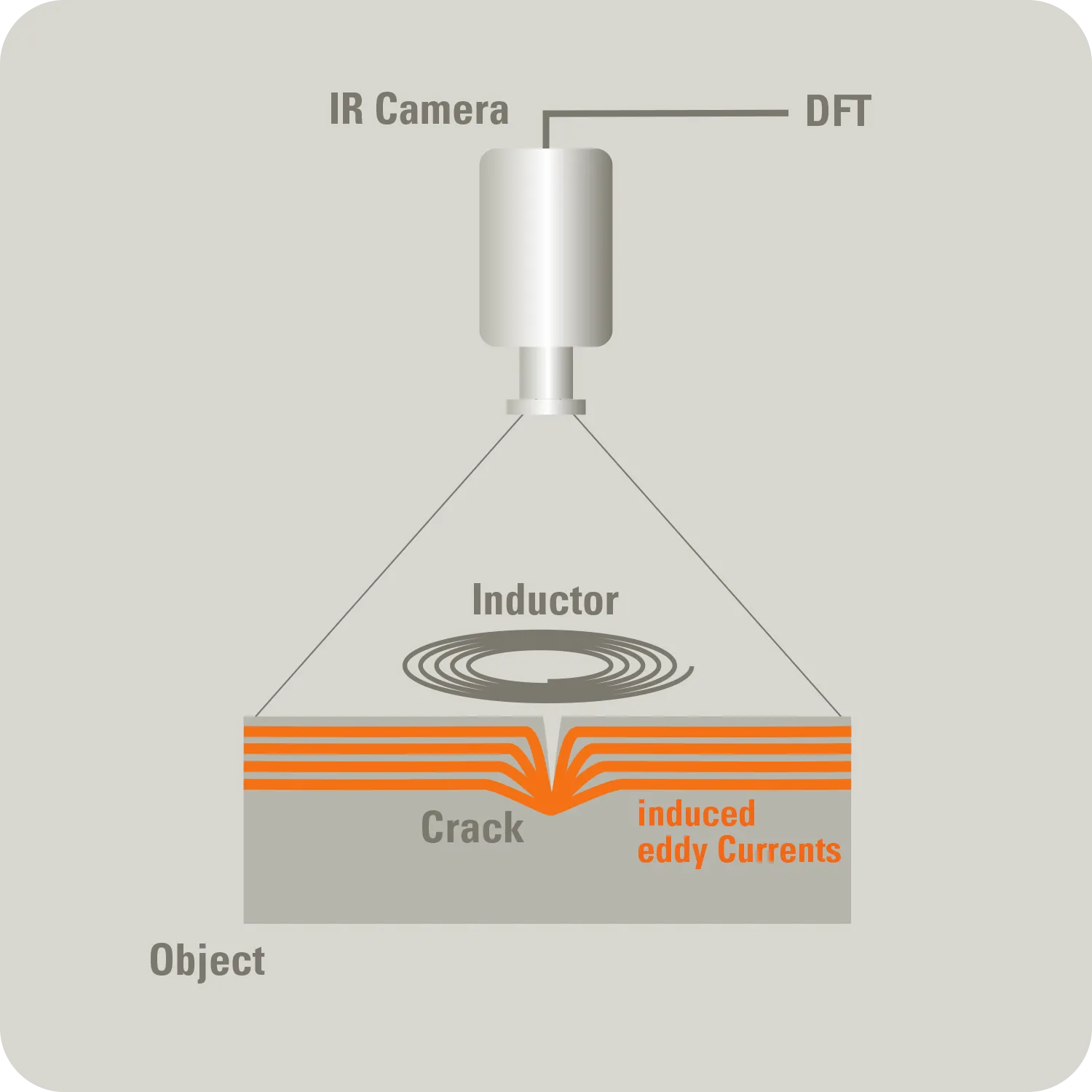Induction thermography
An inductor generates eddy currents in the component. Defects disrupt the current and heat flow. Hot spots form on the surface, which are captured by the IR camera. Non-destructive. Automatable. Suitable for series production.


What is induction thermography?
Benefits
Contactless, fast, imaging
High defect selectivity for cracks and edges
Inductor and frequency adjustment for complex geometries
Inline-compatible, chemical-free
Applications
Crack testing on forging/cast components, rods, shafts, gears
welding/soldering/adhesive seams, heat-affected zones
Railway components: wheels, rails
Metal composites: delamination
Inline crack testing of long steel products
Test setup – excitation
Select excitation

Typical applications
- Surface and edge cracks in shafts, rods, and sheets
- Weld and solder seam inspection, seam ends, bore transitions
- Wheel/rail interfaces, gear flanks, notch zones
- Delaminations in metal composites
Advantages
Depth-selective, reproducible detection with high SNR through synchronized phase analysis.

The camera captures the thermal transient before, during, and after the burst. Evaluation is performed via time contrast or difference; optionally pulse-phase thermography.
Typical applications
- Fast crack screening at edges and notches
- Cycle-based seam inspections
- Hot-spot detection on complex geometries
Advantages
Very short inspection times per field with high transient contrast and controlled heat input.
Questions about Induction Thermography?
In a short intro call, we confirm whether induction thermography fits your application and what value it delivers. Clear, transparent, no obligation.
FAQ
Our frequently asked questions — answered quickly and easily.



